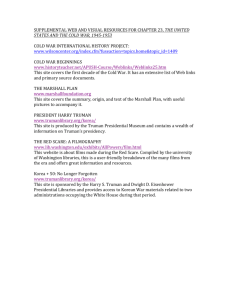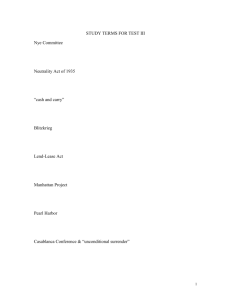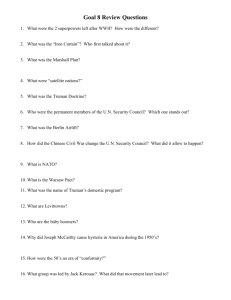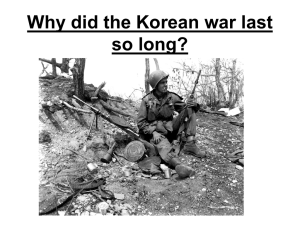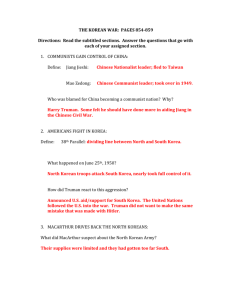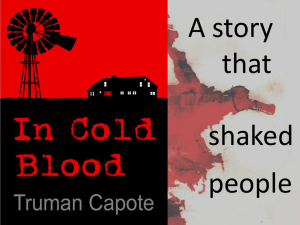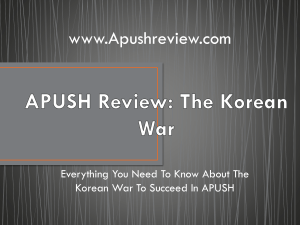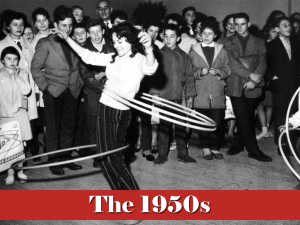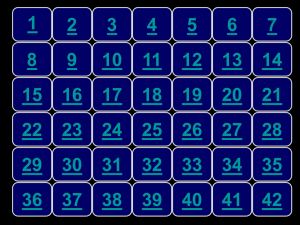Chapter 18-19 The Postwar Years Role Playing
advertisement
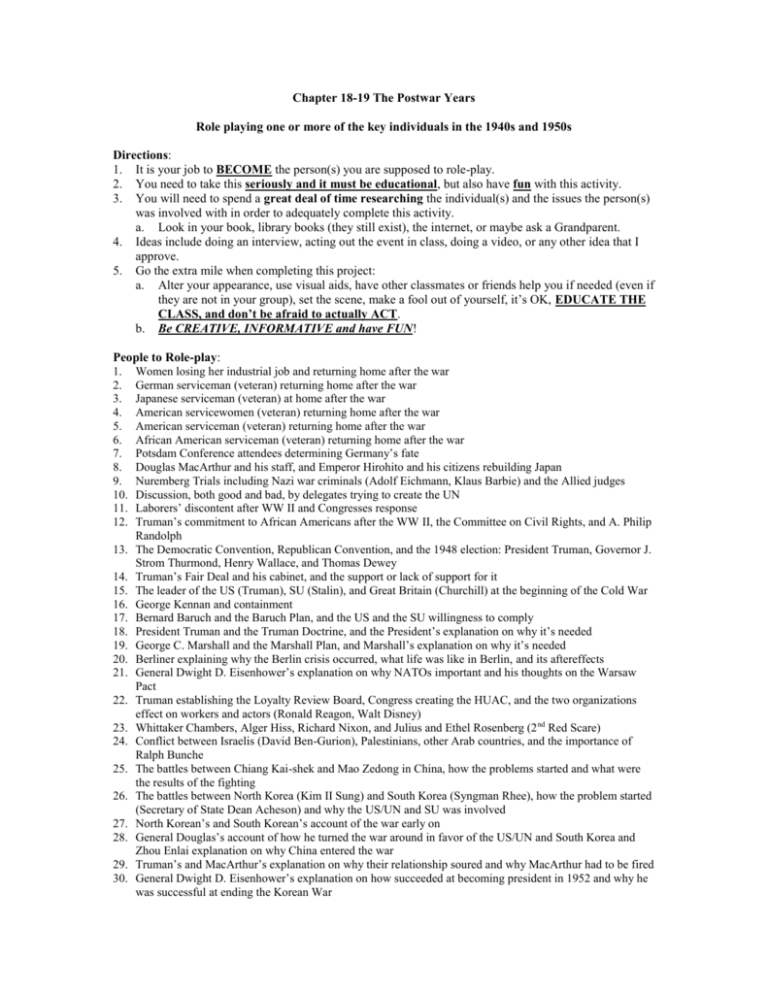
Chapter 18-19 The Postwar Years Role playing one or more of the key individuals in the 1940s and 1950s Directions: 1. It is your job to BECOME the person(s) you are supposed to role-play. 2. You need to take this seriously and it must be educational, but also have fun with this activity. 3. You will need to spend a great deal of time researching the individual(s) and the issues the person(s) was involved with in order to adequately complete this activity. a. Look in your book, library books (they still exist), the internet, or maybe ask a Grandparent. 4. Ideas include doing an interview, acting out the event in class, doing a video, or any other idea that I approve. 5. Go the extra mile when completing this project: a. Alter your appearance, use visual aids, have other classmates or friends help you if needed (even if they are not in your group), set the scene, make a fool out of yourself, it’s OK, EDUCATE THE CLASS, and don’t be afraid to actually ACT. b. Be CREATIVE, INFORMATIVE and have FUN! People to Role-play: 1. Women losing her industrial job and returning home after the war 2. German serviceman (veteran) returning home after the war 3. Japanese serviceman (veteran) at home after the war 4. American servicewomen (veteran) returning home after the war 5. American serviceman (veteran) returning home after the war 6. African American serviceman (veteran) returning home after the war 7. Potsdam Conference attendees determining Germany’s fate 8. Douglas MacArthur and his staff, and Emperor Hirohito and his citizens rebuilding Japan 9. Nuremberg Trials including Nazi war criminals (Adolf Eichmann, Klaus Barbie) and the Allied judges 10. Discussion, both good and bad, by delegates trying to create the UN 11. Laborers’ discontent after WW II and Congresses response 12. Truman’s commitment to African Americans after the WW II, the Committee on Civil Rights, and A. Philip Randolph 13. The Democratic Convention, Republican Convention, and the 1948 election: President Truman, Governor J. Strom Thurmond, Henry Wallace, and Thomas Dewey 14. Truman’s Fair Deal and his cabinet, and the support or lack of support for it 15. The leader of the US (Truman), SU (Stalin), and Great Britain (Churchill) at the beginning of the Cold War 16. George Kennan and containment 17. Bernard Baruch and the Baruch Plan, and the US and the SU willingness to comply 18. President Truman and the Truman Doctrine, and the President’s explanation on why it’s needed 19. George C. Marshall and the Marshall Plan, and Marshall’s explanation on why it’s needed 20. Berliner explaining why the Berlin crisis occurred, what life was like in Berlin, and its aftereffects 21. General Dwight D. Eisenhower’s explanation on why NATOs important and his thoughts on the Warsaw Pact 22. Truman establishing the Loyalty Review Board, Congress creating the HUAC, and the two organizations effect on workers and actors (Ronald Reagon, Walt Disney) 23. Whittaker Chambers, Alger Hiss, Richard Nixon, and Julius and Ethel Rosenberg (2 nd Red Scare) 24. Conflict between Israelis (David Ben-Gurion), Palestinians, other Arab countries, and the importance of Ralph Bunche 25. The battles between Chiang Kai-shek and Mao Zedong in China, how the problems started and what were the results of the fighting 26. The battles between North Korea (Kim II Sung) and South Korea (Syngman Rhee), how the problem started (Secretary of State Dean Acheson) and why the US/UN and SU was involved 27. North Korean’s and South Korean’s account of the war early on 28. General Douglas’s account of how he turned the war around in favor of the US/UN and South Korea and Zhou Enlai explanation on why China entered the war 29. Truman’s and MacArthur’s explanation on why their relationship soured and why MacArthur had to be fired 30. General Dwight D. Eisenhower’s explanation on how succeeded at becoming president in 1952 and why he was successful at ending the Korean War
